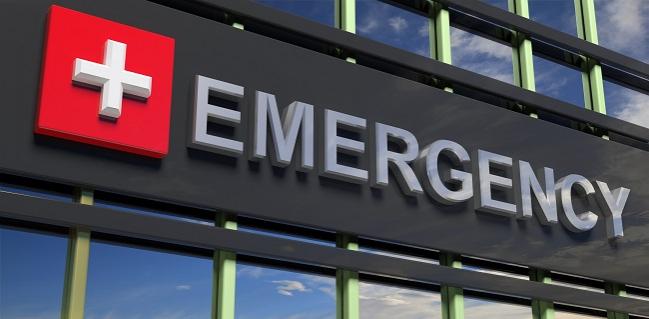FFRCT Feasible in the ED Setting for Acute Chest Pain Patients

By design, however, the study allowed physicians to choose which patients did and did not merit further assessment by FFRCT and did not dictate how the results of functional testing should be applied, Kavitha M. Chinnaiyan, MD (Beaumont Health, Royal Oak, MI), and colleagues caution. Thus, more needs to be known about how using FFRCT in the ED for acute chest pain triage might affect management and outcomes.
“Our primary goal with the paper was to really see if it’s even feasible to be able to use FFRCT in the emergency room setting,” Chinnaiyan told TCTMD. “With the issues about the turnaround time, the length of stay, and the cost, is it even something that we should be doing in these ER patients?”
Clinicians have been uncertain about how the need to send images offsite and wait for results from the company (HeartFlow) might affect how quickly patients can be treated. But Chinnaiyan said the Beaumont Health experience should be reassuring. “The turnaround time now is really very rapid, it’s about an hour or so. That really helps with expediting the triage of the ER patients but also the length of stay and all of that,” she explained.
Commenting on the study for TCTMD, Matthew Budoff, MD (Harbor UCLA Medical Center, Torrance, CA), agreed that the use of FFRCT in the ED is still relatively unusual due to concerns about turnaround time. Now it’s possible to avoid delays even when adding that step, he said. “If you want to optimize healthcare, it looks like this is a way of doing it. . . . To me it looked pretty compelling [and was] a relatively large study of over 500 patients.”
Also noteworthy, Budoff said, is that the current study, published online recently in JACC: Cardiovascular Imaging, matches up with what had been seen for stable CAD in the PLATFORM trial.
No Obvious Downsides
In all, 2,302 patients presented to Beaumont’s ED with acute chest pain and underwent coronary CTA from September 2015 to February 2018. Out of 555 patients who had sufficient image quality and met various clinical criteria including no known CAD, 297 (54%) also underwent FFRCT (196 had negative results and 101 positive, using a cutoff of 0.80).
Diagnostic failure—ie, discrepant results between noninvasive versus invasive testing—did not significantly differ between the CTA and FFRCT groups (1.9% vs 1.68%). Within the FFRCT group, all of these instances were seen in patients with negative results.
When revascularization was deferred on the basis of negative FFRCT results, no deaths or MIs occurred. Negative FFRCT results also were linked with a higher rate of nonobstructive disease being found on invasive angiography (56.5%) as compared with either positive FFRCT results (8.0%) and coronary CTA (22.9%; P < 0.001).
By 90 days, rates of MACE (death, nonfatal MI, and unexpected revascularization after index visit) were similar for the CTA and FFRCT groups (4.3% vs 2.7%; P = 0.310), as were the overall costs of care ($8,582 vs. $8,048; P = 0.550). Mean ED stays were 16.8 hours with CTA and 15.5 hours with FFRCT (P = 0.12).
Interestingly, 14 patients with negative FFRCT findings underwent PCI, “demonstrating that care is often driven by symptoms and other clinical factors,” the researchers note.
What we don’t know is over time, with more acceptance of the technology, would the interventional cardiologist be comfortable not taking them to the cath lab based on CT results? Kavitha M. Chinnaiyan
It’s unclear why so many proceeded to revascularization, Chinnaiyan commented. “That could have been avoided. So what we don’t know is, over time, with more acceptance of the technology, would the interventional cardiologist be comfortable not taking them to the cath lab based on CT results? Because we have this ingrained training in all of us—not just interventionalists but all of us in cardiology—that when we see a stenosis that’s severe or anywhere close to severe we want to do something about it.”
Budoff agreed, noting that he was somewhat disappointed that FFRCT didn’t turn out to be even more cost-effective, given that it can help many patients avoid invasive assessment. As clinicians grow more comfortable in relying on FFRCT results as a gatekeeper, the strategy might have an advantage, he suggested.
Apart from FFRCT’s upfront cost, which equaled out by 90 days thanks to savings in the FFRCT-negative group, there are no downsides, Chinnaiyan said. “There’s no additional procedure that’s done to the patient. We’ve gotten these CT images. There’s no additional tests. . . . We get both the anatomic and the physiologic information from the same set of images.”
Now, Chinnaiyan said, “what we really need is a prospective, randomized trial to look at all of these issues in a very objective and clear way.”
Budoff, for his part, said a multicenter trial is necessary “to show that you can emulate this at more than one institution, that it’s not specific to Beaumont,” a center that pioneered the use of CT in the emergency department.
Caitlin E. Cox is News Editor of TCTMD and Associate Director, Editorial Content at the Cardiovascular Research Foundation. She produces the…
Read Full BioSources
Chinnaiyan KM, Safian RD, Gallagher ML, et al. Clinical use of CT-derived fractional flow reserve in the emergency department. J Am Coll Cardiol Img. 2019;Epub ahead of print.
Disclosures
- This study was supported by a grant from HeartFlow to Beaumont Health. HeartFlow was not involved in the design or conduct of this study, analysis, or interpretation of data, in the preparation, review or approval of the manuscript.
- Chinnaiyan reports serving on the medical advisory board for and receiving institutional research grant support from HeartFlow.
- Budoff reports receiving grant support from General Electric.


Comments